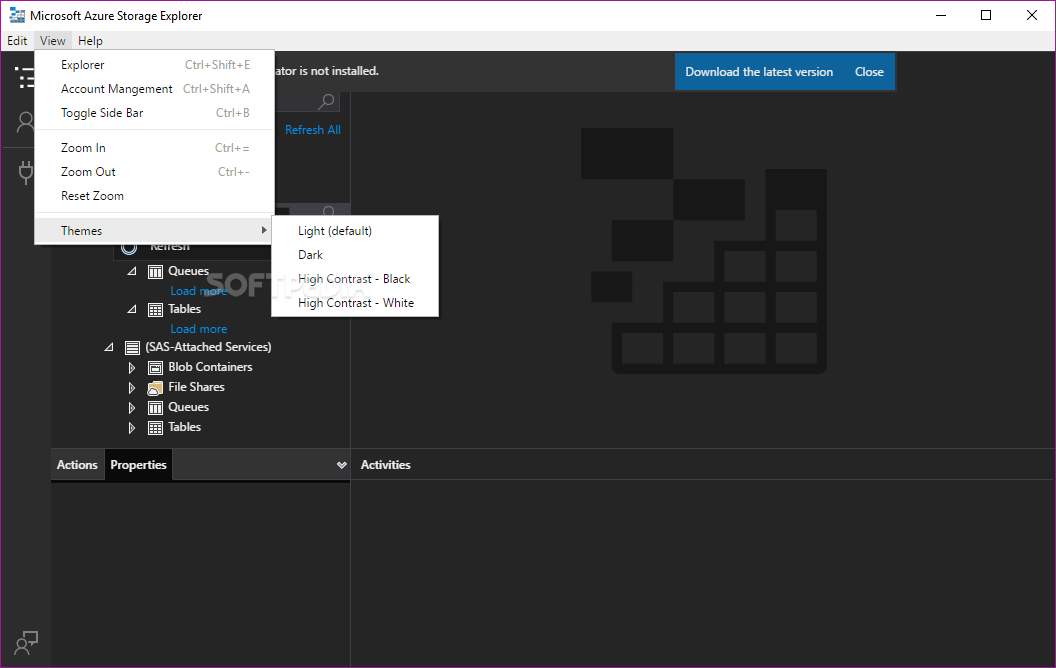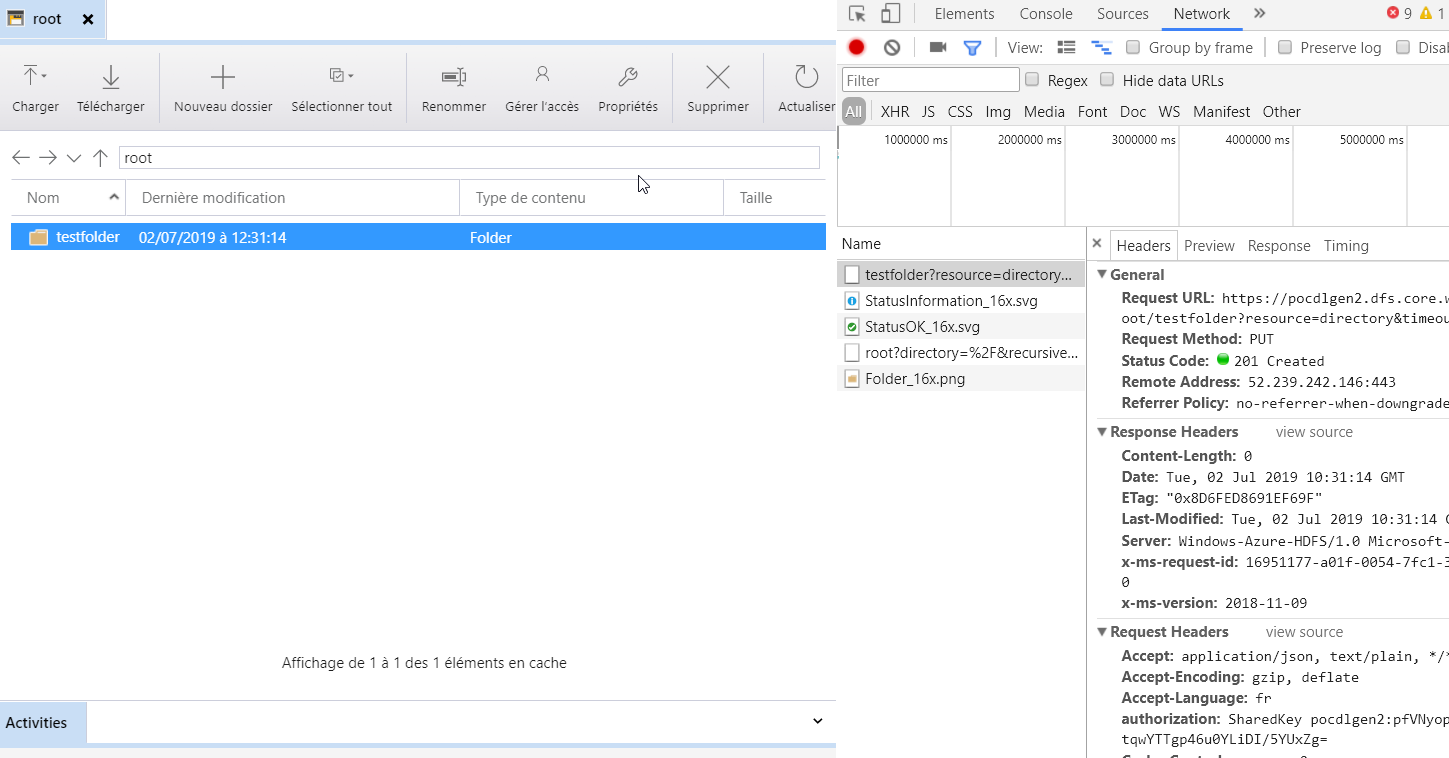

- MICROSOFT AZURE STORAGE EXPLORER POWERSHELL HOW TO
- MICROSOFT AZURE STORAGE EXPLORER POWERSHELL INSTALL
- MICROSOFT AZURE STORAGE EXPLORER POWERSHELL FREE
Users that have many thousands of objects within their storage account can quickly locate specific containers based on their metadata. HasImmutableStorageWithVersioning : False loop-container1 properties:ĭefaultEncryptionScope : $account-encryption-key The results display all containers with the prefix loop and list their properties. $containers = Get-AzStorageContainer -Prefix $prefix -Context $ctx The following example retrieves all containers with the demo prefix and iterates through them, listing their properties. Metadata values are for your own purposes only, and don't affect how the resource behaves. You can use metadata to store additional values with the resource. User-defined metadata consists of one or more name-value pairs that you specify for a blob storage resource. Under the covers, some system properties map to certain standard HTTP headers. Some properties are read-only, while others can be read or set. System properties exist on each blob storage resource. Loop-container4 12:22:00 AM +00:00 True 01D7E8A5EF01C787Ī container exposes both system properties and user-defined metadata. Name PublicAccess LastModified IsDeleted VersionId The result provides the URI of the blob endpoint and lists the containers retrieved by name and prefix. Get-AzStorageContainer -Prefix $prefixName -Context $ctx # Approach 2: Retrieve a list of containers Get-AzStorageContainer -Name $containerName -Context $ctx # Approach 1: Retrieve an individual container The following example retrieves both an individual container and a list of container resources. To return a list of containers that begins with a given character string, specify a value for the -Prefix parameter. To retrieve a single container, include the -Name parameter. Use the Get-AzStorageContainer cmdlet to retrieve storage containers. The result provides the name of the storage account and confirms the creation of the new container. "$($prefixName)4 $($prefixName)5 $($prefixName)6".split() | New-AzStorageContainer -Context $ctx

# Approach 3: Create containers using the PowerShell Split method

New-AzStorageContainer -Name (-join($prefixName, $i)) -Context $ctx # Approach 2: Create containers with a PowerShell loop New-AzStorageContainer -Name $containerName -Context $ctx Remember to replace the placeholder values in brackets with your own values. To use this example, supply values for the variables and ensure that you've created a connection to your Azure subscription. The first approach creates a single container, while the remaining two approaches leverage PowerShell operations to automate container creation. The following example illustrates three options for the creation of blob containers with the New-AzStorageContainer cmdlet. Containers cannot be nested within other containers. There are no limits to the number of blobs or containers that can be created within a storage account. To create containers with PowerShell, call the New-AzStorageContainer cmdlet. For more information about signing into Azure with PowerShell, see Sign in with Azure PowerShell. $ctx = New-AzStorageContext -StorageAccountName -UseConnectedAccount # Create a context object using Azure AD credentials Include the -UseConnectedAccount parameter so that data operations will be performed using your Azure AD credentials. # Connect to your Azure subscriptionĪfter the connection has been established, create the storage account context by calling the New-AzStorageContext cmdlet. To sign in to your Azure account with an Azure AD account, open PowerShell and call the Connect-AzAccount cmdlet. Context objects encapsulate your Azure AD credentials and pass them on subsequent data operations, eliminating the need to reauthenticate. The examples in this article use Azure AD authentication in conjunction with context objects. Authorization can occur by authenticating with an Azure Active Directory (Azure AD) account or using a shared key. You'll need to obtain authorization to an Azure subscription before you can use the examples in this article.
MICROSOFT AZURE STORAGE EXPLORER POWERSHELL INSTALL
To get started with the Az PowerShell module, see Install Azure PowerShell.
MICROSOFT AZURE STORAGE EXPLORER POWERSHELL FREE
See Get Azure free trial.Īzure PowerShell module Az, which is the recommended PowerShell module for interacting with Azure.
MICROSOFT AZURE STORAGE EXPLORER POWERSHELL HOW TO
This how-to article explains how to work with both individual and multiple storage container objects. To learn more about blob storage, read the Introduction to Azure Blob storage. Because all blob data is stored within containers, you must create a storage container before you can begin to upload data. You can use blob storage to gather or expose media, content, or application data to users. Azure blob storage allows you to store large amounts of unstructured object data.


 0 kommentar(er)
0 kommentar(er)
